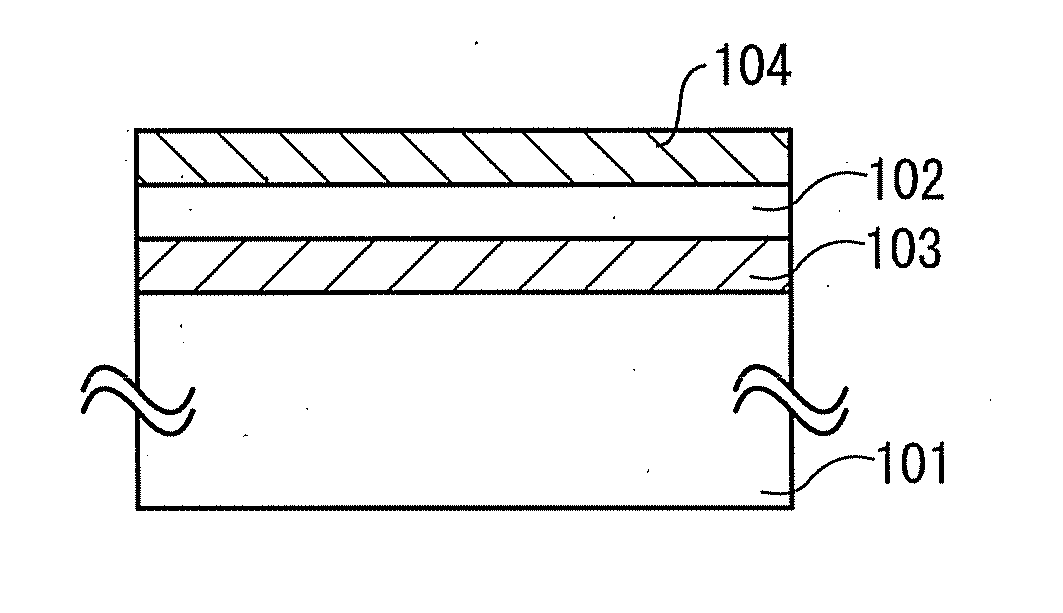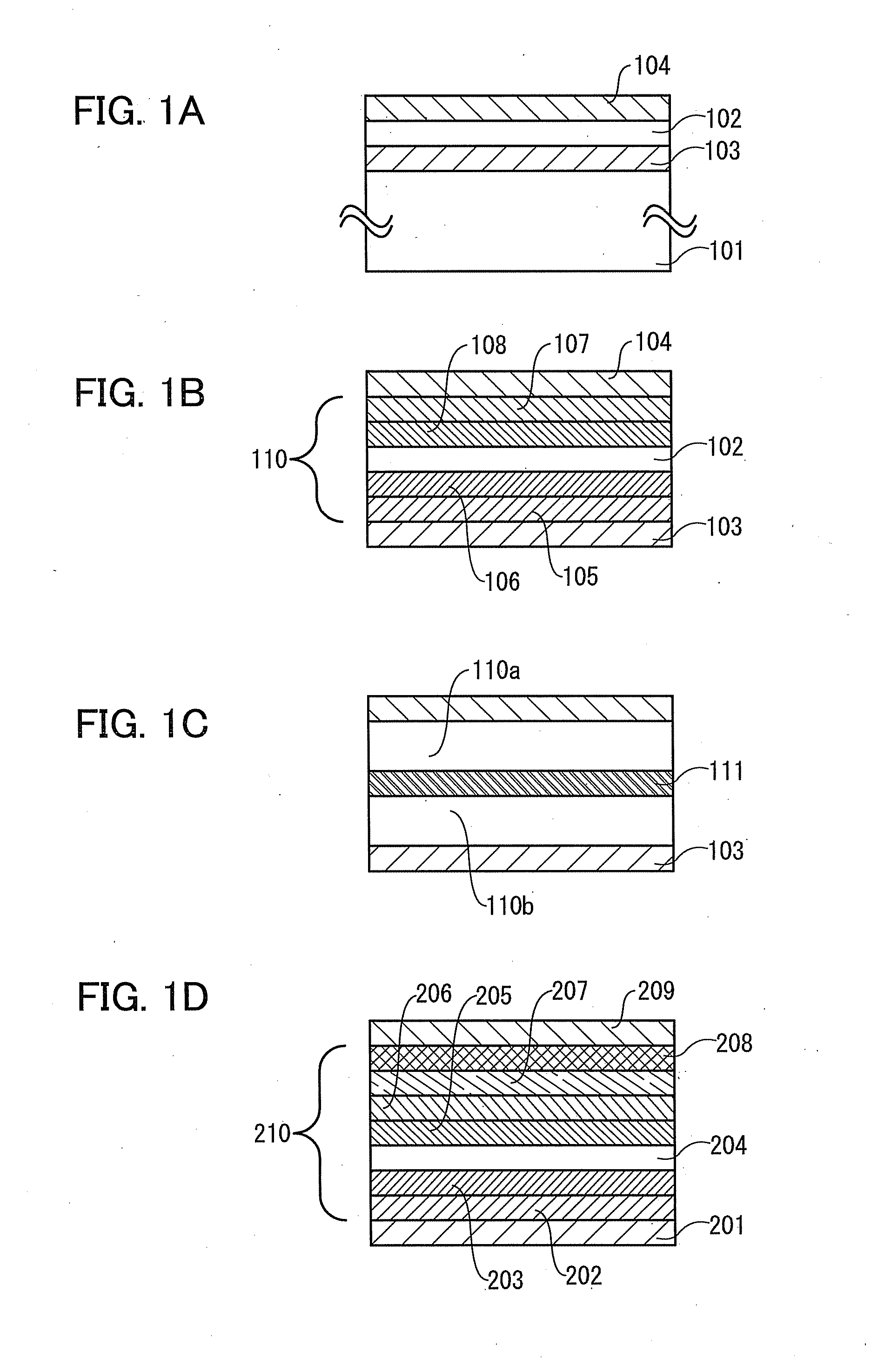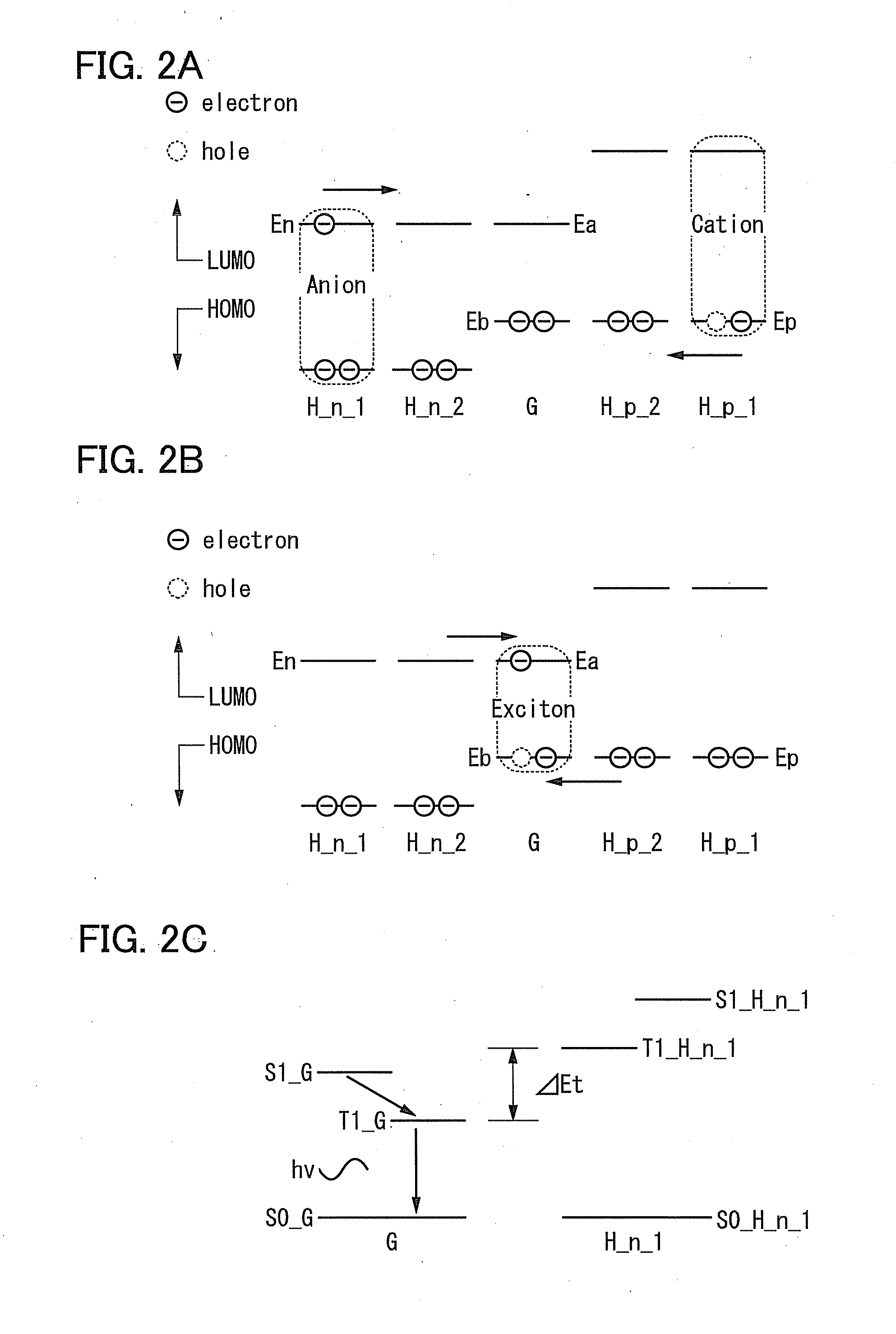Light-Emitting Device
a technology of light-emitting devices and light-emitting elements, which is applied in the direction of thermoelectric devices, organic semiconductor devices, solid-state devices, etc., can solve the problems of molecule difficulty in being a main energy transfer process, decreased emission efficiency, and lowered emission efficiency, so as to achieve efficient injection and increase the rate of direct recombination process
- Summary
- Abstract
- Description
- Claims
- Application Information
AI Technical Summary
Benefits of technology
Problems solved by technology
Method used
Image
Examples
embodiment 1
[0064]In this embodiment, a principle of a light-emitting element of one embodiment of the present invention will be described with reference to FIGS. 2A to 2C. FIG. 2A illustrates energy states of molecules when two n-type host molecules (H_n—1, H_n—2), one guest molecule (G), and two p-type host molecules (H_p—1, H_p—2) are linearly arranged. Each molecule has a HOMO level and a LUMO level.
[0065]Here, for simple description, the LUMO level En of the n-type host molecule is equal to the LUMO level Ea of the guest molecule and the HOMO level Ep of the p-type host molecule is equal to the HOMO level Eb of the guest molecule, but without being limited to this example, −0.3 eV
[0066]In...
embodiment 2
[0090]In this embodiment, a principle of a light-emitting element in accordance with one embodiment of the present invention with reference to FIGS. 3A to 3C. FIG. 3A illustrates energy state of molecules in a state where two n-type host molecules (H_n—1, H_n—2), one guest molecule (G), and two p-type host molecules (H_p—1, H_p—2) are aligned linearly. Each molecule has a HOMO level and a LUMO level.
[0091]Here, the LUMO level En of the n-type host molecule is higher than the LUMO level Ea of the guest molecule by 0.1 eV or more, and the HOMO level Ep of the p-type host molecule is higher than HOMO level Eb of the guest molecule. In addition, the difference between the LUMO level and the HOMO level of the n-type host molecule and the difference between the LUMO level and the HOMO level of the p-type host molecule are preferably both larger than the difference between the LUMO level and the HOMO level of the guest molecule by 0.5 eV or more.
[0092]As illustrated in FIG. 3A, a hole is i...
embodiment 3
[0109]In this embodiment, a light-emitting element of one embodiment of the present invention will be described with reference to FIG. 1B. In the light-emitting element illustrated in FIG. 1B, an EL layer 110 is provided between a first electrode 103 and a second electrode 104. The light-emitting element illustrated in FIG. 1B includes a first carrier-injection layer 105, a first carrier-transport layer 106, a light-emitting layer 102, a second carrier-transport layer 108, and a second carrier-injection layer 107, which are stacked over the first electrode 103 in this order, and the second electrode 104, which is provided thereover. The EL layer 110 includes the first carrier-injection layer 105, the first carrier-transport layer 106, the second carrier-transport layer 108, and the second carrier-injection layer 107, in addition to the light-emitting layer 102. It is to be noted that the EL layer 110 does not necessarily include all of these layers.
[0110]The first electrode 103 serv...
PUM
 Login to View More
Login to View More Abstract
Description
Claims
Application Information
 Login to View More
Login to View More - R&D
- Intellectual Property
- Life Sciences
- Materials
- Tech Scout
- Unparalleled Data Quality
- Higher Quality Content
- 60% Fewer Hallucinations
Browse by: Latest US Patents, China's latest patents, Technical Efficacy Thesaurus, Application Domain, Technology Topic, Popular Technical Reports.
© 2025 PatSnap. All rights reserved.Legal|Privacy policy|Modern Slavery Act Transparency Statement|Sitemap|About US| Contact US: help@patsnap.com



